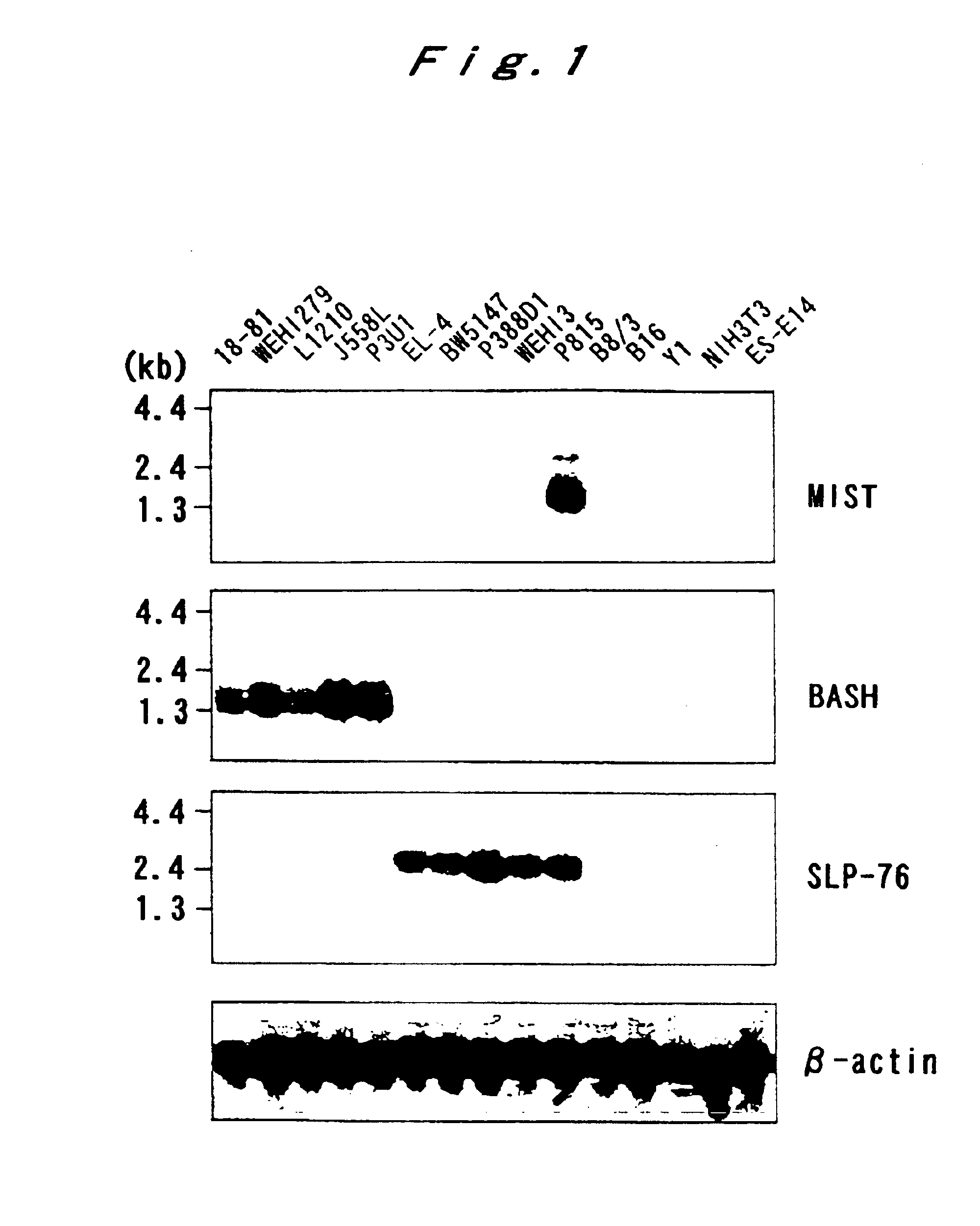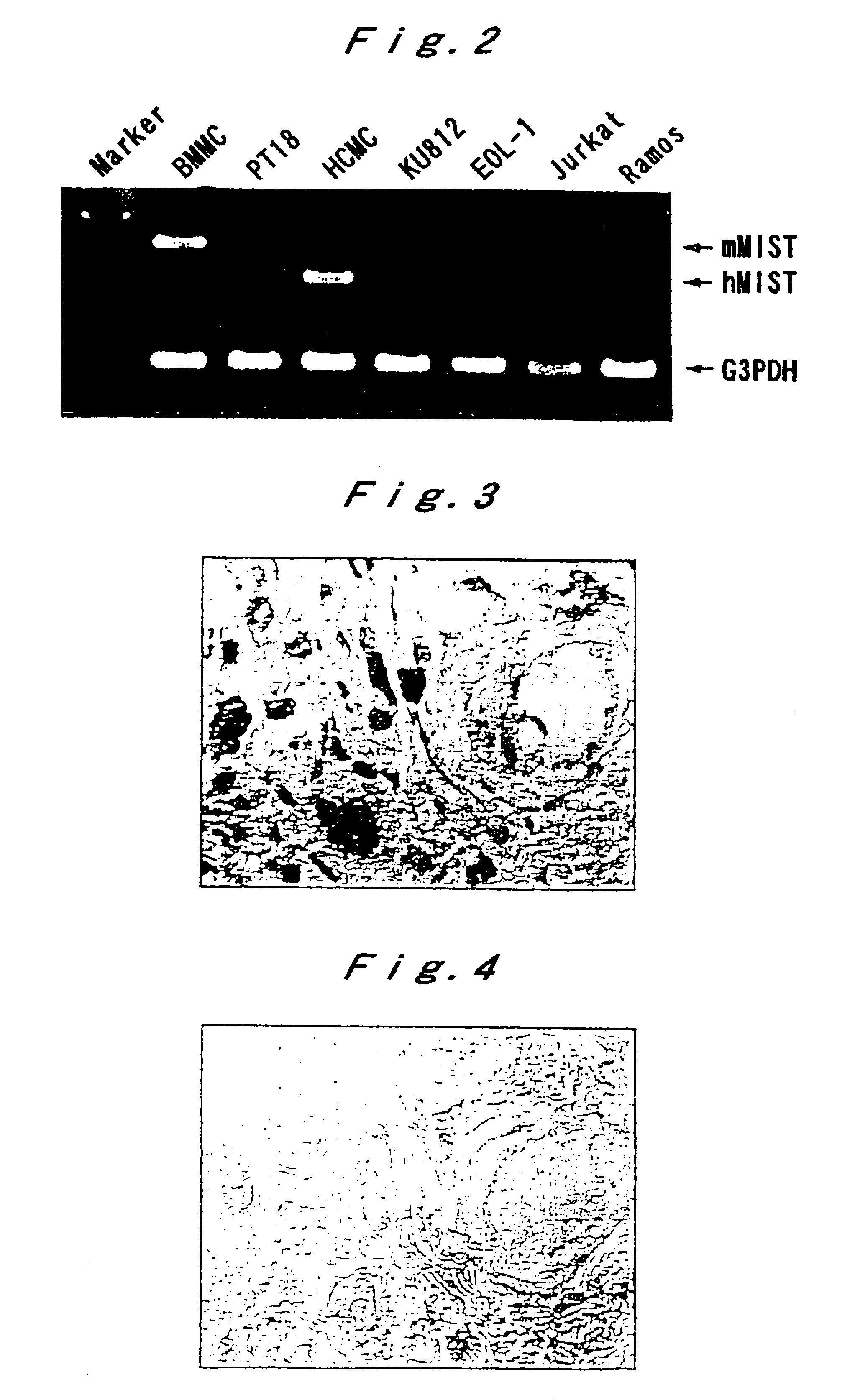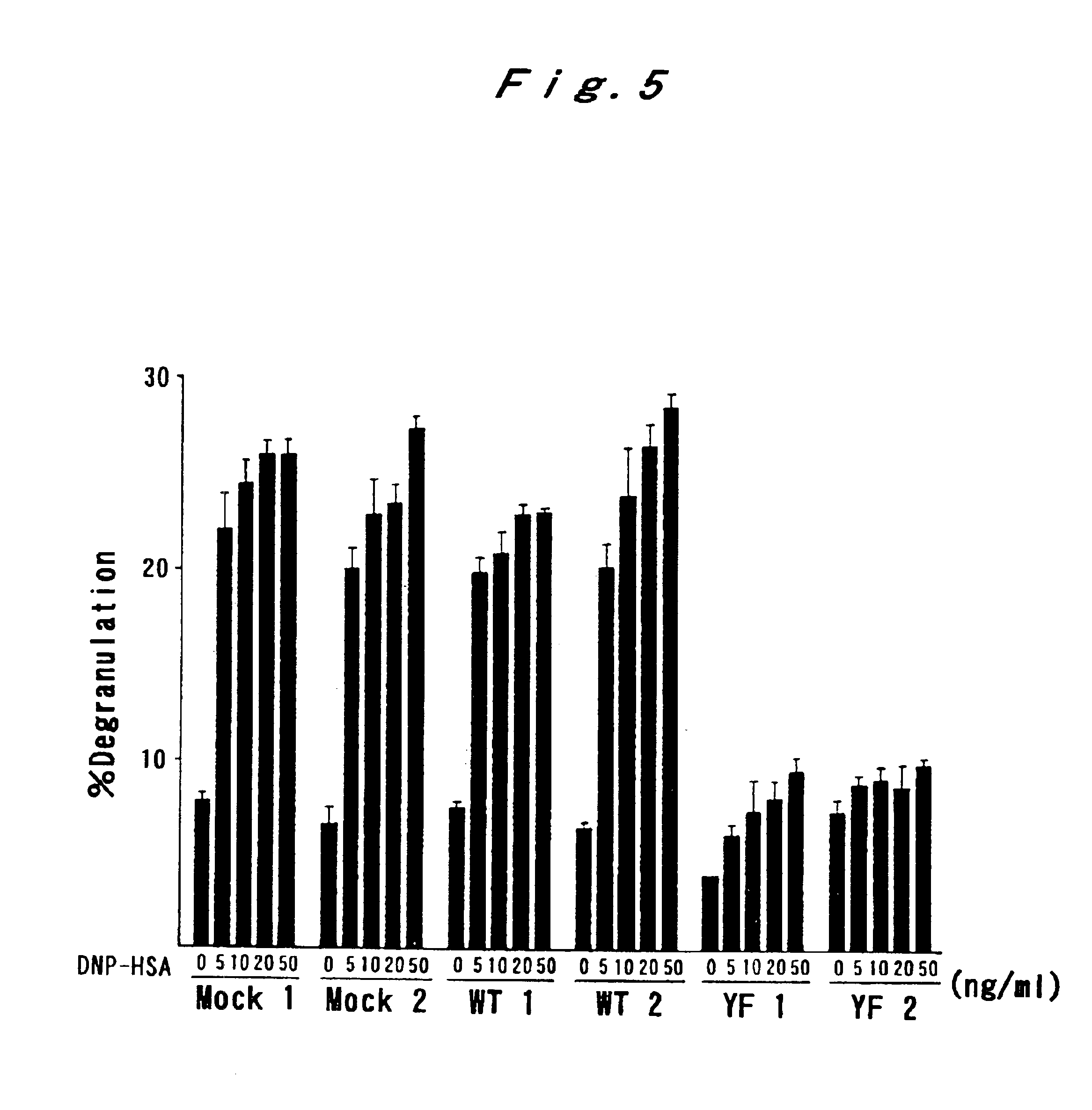Mast cell-specific signal transducing molecules and cDNAs thereof
a signal transducer and mast cell technology, applied in the field of mast cell-specific signal transducers and cdnas thereof, can solve the problems that the signal transduction mechanism involved in mast cell degranulation through the high affinity ige receptor has not been known
- Summary
- Abstract
- Description
- Claims
- Application Information
AI Technical Summary
Problems solved by technology
Method used
Image
Examples
example 1
Full-length mouse MIST cDNA was isolated from PT18 cDNA library with 5'-and 3'-RACE (Marathon cDNA amplification kit, made by Clontech Co.), using primers prepared based on the sequence information of EST clone (GenGank accession No. AA166259). The partial cDNA of human MIST was amplified by PCR using mRNA prepared from human cord blood mast cell (HCMC) cultured with IL-6 and the stem cell factor (SFC: Peprotech) according to the method in "Blood 86:3705-3714, 1995.
The sequence of the cDNA obtained was determined by the method known in the art, confirming that the mouse MIST cDNA comprises the base sequence represented by SEQ ID No. 1 and the human MIST partial cDNA comprises the base sequence represented by SEQ ID No. 3. It was also confirmed that the mouse MIST has the amino acid sequence represented by SEQ ID No. 2 with a molecular weight of about 60 kDa. Eight Tyr residues capable of phosphorylation are found in the mouse MIST from the N-terminus to the central part....
example 2
Construction of Expression Vector
The coding region of the mouse MIST cDNA obtained in Example 1 was amplified by PCR, and the amplified region was inserted between the EcoRI and Sal I sites of pCATneo expression vector (J. Immunol., 161:5804-5808, 1998) to construct a recombinant expression vector (pCATneo-MIST-WT).
The MIST mutant (MIST-YF) in which amino acids (Tyr) at 69, 96, 101, 153, 174 and 188 in SEQ ID No. 2 were substituted with other amino acids (Phe) was prepared by a PCR-based mutagenesis using a commercially available mutation kit (made by Stratagene Co.), and subcloned the MIST-YF into the pCATneo to construct a recombinant expression vector (pCATneo-MIST-YF).
example 3
Preparation of Transformed Cells
The rat must cell line RBL-2H3 were transfected with the recombinant expression vectors pCATneo-MIST or pCATneo-MIST-YF prepared in Example 2 to prepare the transformed cell RBL-2H3-MIST and RBL-2H3-MIST-YE.
PUM
| Property | Measurement | Unit |
|---|---|---|
| molecular weight | aaaaa | aaaaa |
| affinity | aaaaa | aaaaa |
| vascular permeability | aaaaa | aaaaa |
Abstract
Description
Claims
Application Information
 Login to View More
Login to View More - R&D
- Intellectual Property
- Life Sciences
- Materials
- Tech Scout
- Unparalleled Data Quality
- Higher Quality Content
- 60% Fewer Hallucinations
Browse by: Latest US Patents, China's latest patents, Technical Efficacy Thesaurus, Application Domain, Technology Topic, Popular Technical Reports.
© 2025 PatSnap. All rights reserved.Legal|Privacy policy|Modern Slavery Act Transparency Statement|Sitemap|About US| Contact US: help@patsnap.com



